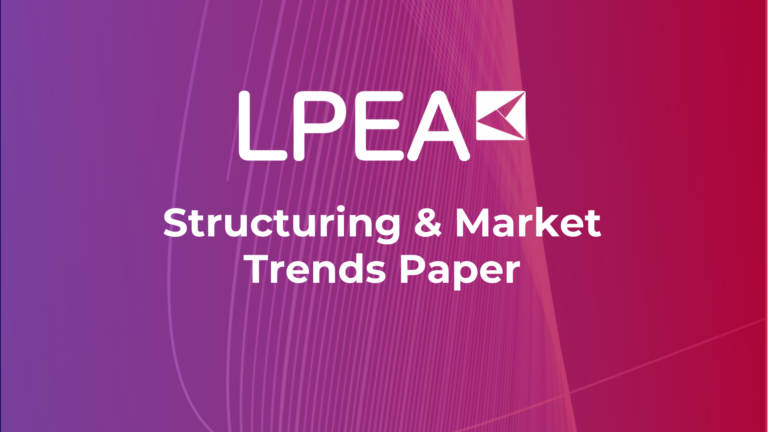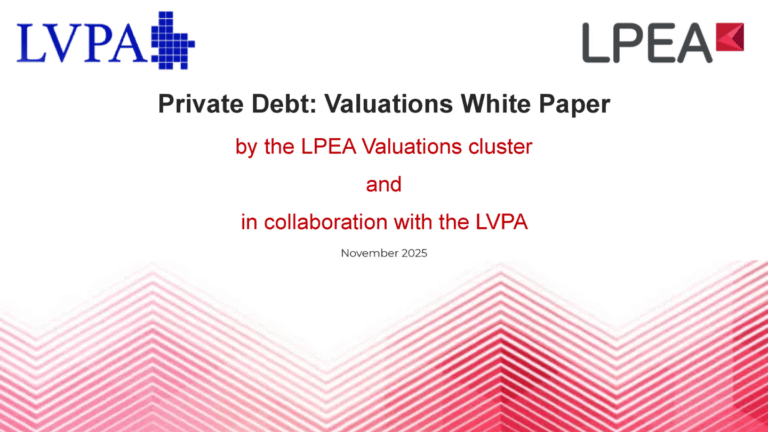Eva Vogt, Partner, Head of ESG and impact at EMK
Interviewed by Emilie Huyghues Despointes, MV Credit and Vincent Lemaître, Tikehau Capital on 19th October 2023
Question 1: How do ESG ratchets fit into the overall ESG strategy of your investments? Do you systematically include ESG ratchets in the transactions?
It’s on a case-by-case basis, but we’re seeing the opportunity to more and more.
However, when we first acquire a company, and the company usually does not have a sustainability strategy. Therefore, without the fundamental understanding of what the most material issues are for the company (identified through a materiality analysis), and without a data baseline from which to set objectives and targets, it is very difficult to put in place structured Sustainable Performance Targets (SPTs) from the get-go.
So the first step is to identify the material issues, understand current performance and gather a data baseline before you can set priorities and targets. And in most instances post-acquisition, this takes time.
Once we have identified key areas where we can drive sustainability-related performance, another challenge arises when considering appropriate targets. The challenge that we have, and we experienced with setting this sort of forward-looking target, is trying to find a methodology that would enable us to factor in the rapid growth that the company is set to experience over the period of the loan.
We don’t want the ‘tail to wag the dog’, as in; we don’t want the targets to dictate what our buy and build strategy should be or to influence whether to acquire an add-on target or not. For instance, if you have set a group target to improve the recycling rate of the company by 10% year on year, but then acquire a large bolt-on with a very poor recycling rate, you should not be penalised for not meeting your target in this instance as ultimately what we’re wanting to do is transition these companies. So the ability to rebaseline according to significant changes in the company is important (and can often be complex).
Question 2: You were mentioning that you don’t systematically set sustainability performance targets in your loans but rather you do it at your initiative or the initiative of the debt provider. Are these ratchets a trigger in the choice of your partner like the debt provider you will work with?
No. I don’t think it yet influences our choice of debt provider. I would say it’s only in the last year that we have been seeing more and more opportunity to integrate this as a feature of the loan. Our experience is that different debt providers have different maturity levels and a different appetite in terms of acceptable themes and targets. And as I said before, like with those companies it’s being offered to, they’re not yet in the position to take it up. However, if you do not take advantage of the offer immediately to integrate a SLL margin rachet, you can sometimes still have the opportunity to integrate it at a later date depending on the length of the loan agreement.
The SLL we have helped structure for one of our portfolio companies has been instrumental in expediting the companies’ sustainability strategy, focusing the company around key priorities and enabling them to see some tangible benefit year on year from implementing their strategy. Historically, sustainability has been seen more as a ‘long play game’ in terms of creating value. However, by lowering your cost of debt by making good progress on your key objectives you are able to quantify the saving and realise some short-term benefit as well, which also goes some way into being able to hypothecate the saving back into the cost of implementation.
The SLL we negotiated for our portfolio company has a one-way rachet. We did not have a two-way rachet. For private companies I feel quite strongly that this is important to present only an upside (although the general opinion in the market is that a two-way rachet is best practice). The reason why I believe a one-way rachet is a better practice for private markets is that it enables companies to set more ambitious targets. If it is a two-way rachet and you stand to lose money (pay more interest than you would otherwise) if you do not meet your targets. The result is that you are more likely to set ‘safe’ targets or ones that are watered-down so that you can be pretty confident you will meet them. If you have a one-way rachet, you only stand to gain and this encourages you to set more ambitious targets. I am much less inclined to want to inflict a two-way ratchet on our portfolio companies because there’s no way that I want companies to be penalized for not meeting ambitious sustainability targets when I know how challenging they are to meet. Most often targets are set as linear trajectories, however, it is my experience that targets are more often met in step changes. E.g. you might set a science-based target and not meet a prescribed % decrease in emissions year on year for the first two years but may reach the linear reduction trajectory in the third year. Therefore, sometimes a degree of flexibility is needed and that is why being rewarded for meeting the target and not penalised for not meeting it (in one given year) I believe is important, as it introduces some flexibility.
So, the key thing that gave us the most confidence in setting ambitious sustainability targets was the fact that we only stood to gain should we meet them and that we would not be penalized if we did not.
Question 3: That’s interesting. How does it compare with the management package?
Structuring an incentive on managements’ remuneration package is a logical step. It would make sense to structure it in a way where >10% of variable remuneration would be conditional on meeting the key SPTs in the SLL. And yes, if you don’t meet the key objectives, then you will not get that proportion of your bonus, but that isn’t a 2-way ratchet. The C-suite member would only stand to gain ‘bonus’ remuneration.
Question 4: Did you participate in the selection of KPIs and targets? If yes, do you have dedicated partners/providers supporting you?
EMK initially suggested 5 material themes for our portfolio company’s SLL framework. These were presented to the syndicate of banks who further refined the framework. We then worked with a third-party consultancy to help the portfolio company to baseline the data and work with both EMK and the portfolio company to set appropriate targets.
It was fundamental that a Sustainability Coordinator role was established to coordinate the preferences of a group of different stakeholders. This role was adopted by me, eventually, and in retrospect I would not do this again as it was extremely time consuming. It is better that this role is taken up by one of the lenders officially who will coordinate and compile all the other lenders’ preferences to feed back to the borrower.
Question 5: Have you observed any differences in in the terms and conditions of the system, the SLL compared to the traditional loans and how these differences impact your investment strategy and returns?
Best practice in relation to SLL is evolving at a rapid pace. Even during the course of negotiating and structuring our sustainability framework for our portfolio company’s SLL, the rules of the game and banks’ preferences and acceptance seemed to change significantly, and also var significantly between banks. It is a very ‘live’ environment – and the market still seems to be finding its feet. Fortunately, if you are able to align with existing approved standards and methodologies out there such as the SBTi then you stand a much better change of satisfying the majority of the parties.
Question 6: Do you anticipate that SLLs will become a more prominent financing tool in your future investments, and how do you see the landscape of sustainable finance evolving in the coming years?
I think we were quick off the mark. But ultimately now I’d be much more cautious knowing what the process entails. There are a few things I would consider before committing to structuring a SLL: 1) The time investment from my team 2) Whether the company has the internal resource to baseline their data sufficiently and to execute on an ambitious framework and deliver on the SPTs once they are set 3) Whether the rachet is one-way or two-way (will they be penalised if they do not meet the targets).
Incentive for meeting SPTs prioritised in a company sustainability framework can be created for management through linking variable remunerable to their delivery. Sometimes I think this is a better incentive that a two-way rachet which is going to cost the business money if they don’t meet their targets. However, if you can integrate a SLL which allows you to set ambitious targets and will reward you when they are met, then this is the best incentive and probably the greatest catalyst for change.




